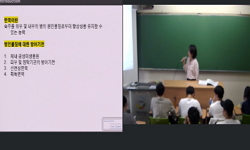One-dimensional (1D) nanostructure systems, such as nanowires, nanorods, and nanotubes have fascinating distinctive features. These nanostructures are essentially ideal building blocks for electronic, photonic devices, and sensor applications. Among s...
http://chineseinput.net/에서 pinyin(병음)방식으로 중국어를 변환할 수 있습니다.
변환된 중국어를 복사하여 사용하시면 됩니다.
- 中文 을 입력하시려면 zhongwen을 입력하시고 space를누르시면됩니다.
- 北京 을 입력하시려면 beijing을 입력하시고 space를 누르시면 됩니다.
면역세포 분리 및 뉴런칩 응용을 위한 실리콘 나노선 성장 및 특성 연구 = Study of growth and characterization of silicon nanowires for immunocyte separation and neuron-chip applications
한글로보기https://www.riss.kr/link?id=T12008449
- 저자
-
발행사항
전주 : 전북대학교 대학원, 2010
-
학위논문사항
학위논문(석사) -- 전북대학교 대학원 , 반도체.화학공학부(반도체공학) , 2010. 2
-
발행연도
2010
-
작성언어
한국어
-
주제어
실리콘 나노선 성장 ; 실리콘 나노선 트랜지스터 ; 면역세포 ; 세포 분리
-
발행국(도시)
전북특별자치도
-
형태사항
viii, 88 p. : 삽화 ; 26cm
-
일반주기명
전북대학교 논문은 저작권에 의해 보호받습니다.
지도교수:이상권
참고문헌 : p.81-84 - 소장기관
-
0
상세조회 -
0
다운로드
부가정보
다국어 초록 (Multilingual Abstract)
One-dimensional (1D) nanostructure systems, such as nanowires, nanorods, and nanotubes have fascinating distinctive features. These nanostructures are essentially ideal building blocks for electronic, photonic devices, and sensor applications. Among semiconductor nanowires, especially silicon nanowires have been drawn much interests due to their scientific and technological properties. These can be used as nanoscale devices such as field-effect transistors (FETs), light-emitting diodes (LED), solar cells, gas-sensors, and thermoelectric devices, etc. These nanostructures can also be used in the field of bio-medical applications because of excellent biocompatibility. In this report, we studied immunocyte separation and neuron-chip applications with silicon nanowire. Also we developed unit processes, a modulation of doping concentration and a formation of nickel silicide for high performance silicon nanowire FET. First of all, we have synthesized the silicon nanowires using a vapor-liquid-solid method in a chemical vapor deposition (CVD) quartz-tube furnace with silicon tetrahydride (SiH4) as a silicon precursor and gold as a catalyst. The diameters of the silicon nanowire were normally in the range of 150 ~ 300 nm and the lengths are in the range of 3 ~ 10 um with high dense arrays. We also have discussed some of the material characterizations such as field-emission scanning electron microscopy (FE-SEM), high-resolution transmission electron microscopy (HR-TEM), and energy-dispersive X-ray spectroscopy (EDS). Second, we developed unit processes, a modulation of doping concentration using ion implantation and a formation of nickel silicide for lower contact resistance at silicon-metal interface. We also performed a SILVACO simulation for optimization of ion implantation process. Then, we have demonstrated p-type silicon nanowire FET prepared by B-ion implantation with a dose of 1 ? 103 ions/cm2 and an energy of 10 keV, a carrier mobility and a concentration were estimated to be 2.9 cm2/V∙s and 1.1 ? 1019 /cm3 respectively. Using KOH solution for wet-etching process, we synthesized less than 100nm silicon nanowire diameter, performed a formation of nickel silicide, and studied its material characterization by FE-SEM and EDS analysis.
Third, we have synthesized silicon nanowire arrays on the patterned silicon substrate for immunocyte separation. Then, a streptavidin, an APTES, a GA were coated continuously on the patterned silicon nanowire arrays. A CD4+ T cell was separated from a splenocyte in a mouse spleen using the streptavidin modified silicon nanowire arrays. Finally we estimated up to 93 % separation yield of the CD4+ T cell.
목차 (Table of Contents)
- 그림 목록 iv
- Abstract vii
- I. 서론
- 서론 1
- Ⅱ. 이론적 배경
- 그림 목록 iv
- Abstract vii
- I. 서론
- 서론 1
- Ⅱ. 이론적 배경
- i. Fabrication of Si NW FET
- 1. 실리콘 나노와이어 합성
- 1) Bottom-up 방식의 실리콘 나노선 합성 3
- 2) Top-down 방식의 실리콘 나노선 합성 8
- 2. 실리콘 나노선 소자 제작 공정 I
- 1) 다수의 나노선 정렬 방법 11
- 2) 단일 나노선 정렬 방법 15
- 3. 실리콘 나노선 소자 제작 공정 II
- 1) 도핑 농도 조절 18
- 2) Silicide 형성 20
- ii. Biomedical application of nanomaterials
- 1. 면역세포 분리
- 1) 자성나노입자(Magnetic nanoparticle) 22
- 2) 자성나노선(Magnetic nanowire) 22
- 2. 신경세포(Neuron cell) 신호 감지
- 1) 패치클램프(Patch clamp) 27
- 2) MEA (multi-electrodes array) 29
- 3) 실리콘 나노선 트랜지스터 31
- Ⅲ. 실험
- i. Fabrication of Si NW FET
- 1. 실리콘 나노선 성장
- 1) 성장용 샘플 준비 33
- 2) 실리콘 나노선 성장 33
- 3) 실리콘 나노선 물질 특성 분석 35
- 2. Silvaco 시뮬레이션
- 1) 2D ATHENA 시뮬레이션 37
- 2) 2D ATLAS 시뮬레이션 37
- 3. 이온주입된 실리콘 나노선 전계효과 트랜지스터
- 1) 이온주입을 위한 샘플 준비 38
- 2) 이온주입 공정 38
- 3) 소자 제작 공정 38
- 4) 전기적 특성 평가 40
- 4. Nickel silicide 가 형성된 SiNW FET
- 1) KOH 용액 이용 실리콘 나노선 지름 조절 42
- 2) Nickel silicide 가 형성된 실리콘 나노선 전계효과트랜지스터 42
- ii.Biomedical application of nanomaterials
- 1. 면역세포 분리(Immunocyte separation)
- 1) 마우스의 비장(spleen)에서 면역세포(Splenocyte) 추출 44
- 2) 혈구계수기(Hemacytometer) 이용 세포 수 측정 46
- 3) 면역세포 분리 소자(Immune cell separation device) 제작 49
- 4) CD4+T세포 (Cluster of Differentiation 4+Tcell)분리 50
- 5) 유세포분석을 위한 세포 염색 53
- 2. 신경세포 배양
- 1) PC12 세포주 (cell line) 해동 54
- 2) 계대 배양(Subculture) 및 배지조성 54
- Ⅳ. 실험 결과 및 논의
- i. Fabrication of Si NW FET
- 1. 실리콘 나노선 성장 및 분석 56
- 2. 이온 주입된 실리콘 나노선 전계효과트랜지스터를 위한 Silvaco simulation 및 실제 소자의 전기적 특성 분석 59
- 3. Nickel silicide 가 형성된 실리콘 나노선 전계효과트랜지스터 64
- ii. Biomedical application of nanomaterials
- 1. 면역세포 분리 68
- 2. PC12 세포주 분화 77
- Ⅴ. 결론
- 결론 78
- Ⅵ. Future works
- Future works 80
- Ⅶ. 참고문헌
- 참고문헌 81
- Ⅶ. Publication
- Journal Papers and Proceedings 85
- Conference Presentations 87









